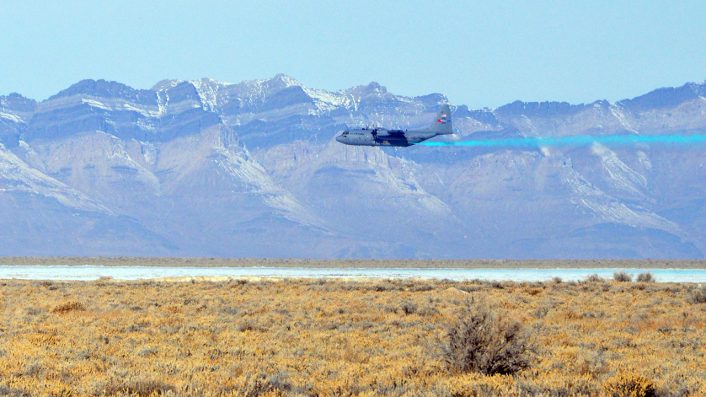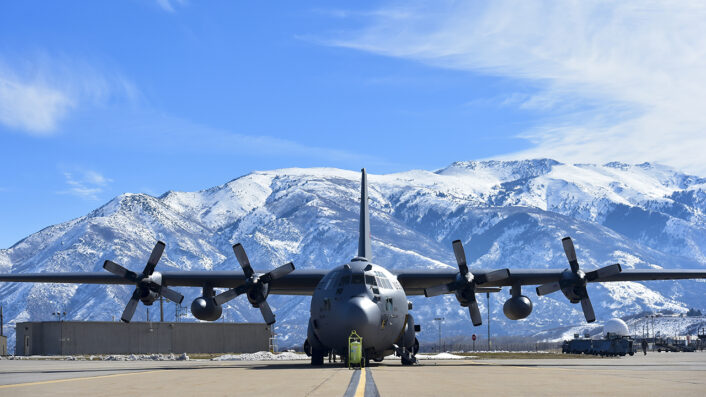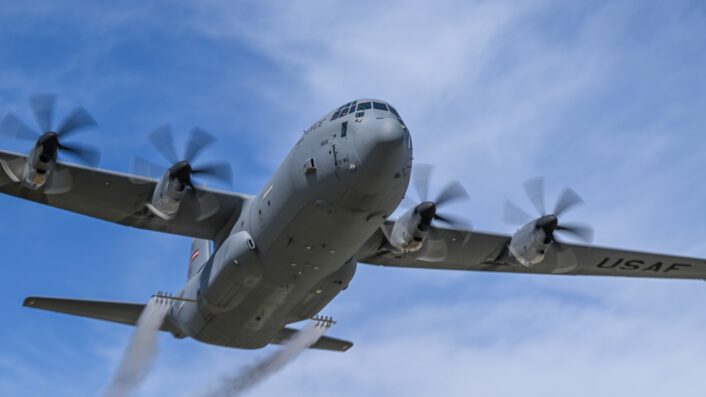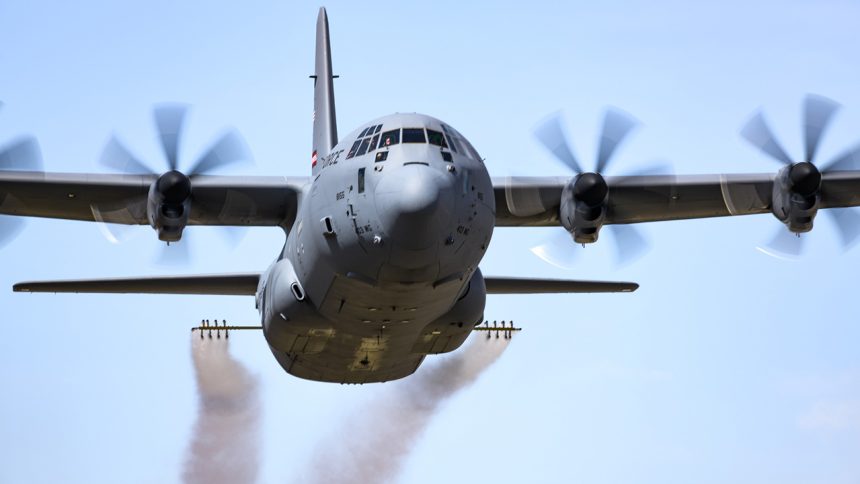The 910th AW (Airlift Wing) prepares to upgrade its C-130H Hercules fleet to new C-130J Super Hercules for aerial spray missions.
Based at Youngstown Air Reserve Station, Ohio, is a pretty unique unit of the Department of Defense: the only one with aerial spray capability and dedicated aerial spray maintenance flight.
At the moment, the unit operates a fleet of six C-130H Hercules aircraft (they were eight at the end of 2022), equipped with specially-designed Modular Aerial Spray Systems (MASS) that are used to carry out the aerial spray mission, whose origins date back to 1947, when the Air Force created Special Aerial Spray Flight to reduce troop loss due to vector borne diseases.
This kind of mission has become common practice for the Air Force Reserve since 1973, as UC-123K spray aircraft and AF entomologists were transferred from active duty’s 4500th Aerial Spray Flight, Langley AFB, VA to AFRES’ 355th Tactical Airlift Squadron, Rickenbacker ANGB, Ohio.
Nowadays the task involves spraying for disease-carrying pests over Department of Defense (DoD) installations and anti-foliage operations on bombing ranges to decrease inadvertent brush fires and to expose unexploded ordnance (UXO) after bombings. The U.S. Air Force program also maintains a stand-by readiness capability using oil dispersing agents to neutralize openwater oil spills, and vector control over metropolitan areas after a natural disaster. The aircraft are also used for mosquito control aerial spray missions, to assist civil authorities fighting pest insects.

According to official Air Force data, the 910th Aerial Spray Flight conducts as many as 25 recurring annual missions on 12 military installations in nine states, and in some cases, over communities surrounding these DoD areas. In addition, this Air Force Reserve Command special mission unit has responded to national disasters such as Hurricanes Katrina/Rita in 2005, Hurricane Gustav in 2008, the Deepwater Horizon Oil Spill in 2010, Hurricane Harvey in 2017 and Hurricanes Laura/Delta in 2020.
While not very well known, the list of operations the 910th have taken place is pretty impressive:
- May 22, 1973, first AFRES aerial spray mission conducted at Langley AFB, VA
- July 1973, assisted Panama combating Eastern Equine Encephalitis outbreak by controlling Canal Zone migratory salt-marsh and adult freshwater mosquitoes; conducted research with U.S. Army at Fort Drum, NY, testing efficacy aerial spray on black fly control
- 1975, over 160,000 acres of Guam refugee camp treated to preempt Dengue fever outbreak
- 1977 and 1978, conducted five missions controlling an internationally quarantined Japanese beetle infestation at Lajes Air Force Base, Azores
- 1981, aerial spray missions for gypsy moth control at West Point, NY, Fort Dix, NJ; McGuire AFB, NJ
- 1983, pioneered aerial spray control of biting midges at Parris Island Marine Corps Recruit Depot, SC; also established vegetation control program at the Utah Test and Training Range saving U.S. Government $1.5 million annually; also treated 217 communities and 525,024 acres responding to a public health emergency for Western Equine Encephalitis in Minnesota
- 1985, assisted Department of Agriculture in emergency control efforts over more than 700,000 acres of Idaho for a major grasshopper infestation
- 1986, C-130A’s replace UC-123K’s after joint testing with the Department of Agriculture verified
- C-130 aerial spray effectiveness
- 1988, C-130E’s replaced C-130A’s, the Modular Aerial Spray System (MASS) was developed for
- C-130 operations; MASS is capable of ultra low to ultra high volume sprays
- 1989, FEMA supported treating over 855,000 acres in South Carolina after Hurricane Hugo
- January 1992, AFRC aerial spray mission transferred from Rickenbacker ANGB to Youngstown ARS, Ohio; C-130H’s aircraft replaced C-130E’s; first ever dedicated spray maintenance flight established
- 1992, supported FEMA by providing mosquito management in the aftermath of Hurricane Andrew, sprayed over 288,000 acres in Florida
- 1995, Memorandum of Agreement (MOA) between US Coast Guard and USAFR to apply dispersant during catastrophic oil spills established
- 1996, unit added Geographical Information System (GIS) technology and Differential Global Positioning System receivers to spray aircraft
- October 1999, supported FEMA by providing mosquito infestation in the aftermath of Hurricane Floyd, sprayed approximately 1.7 million acres over VA and NC
- 2000, partnered with fire prevention program at Saylor Creek Range, Mountain Home AFB, Idaho, controlling cheatgrass with aerial applications allowing native prairie grasses to reestablish as the dominate species and reduce the potential for range fires
- 2001, new groundbreaking mission at Grand Forks Air Force Base, ND interrupting larval development and treating for flying adult mosquitoes at the same time
- 2005, new mosquito control mission at Minot Air Force Base, ND established
- 2005, supported FEMA by treating 2,880,662 acres over Louisiana and Texas to control for mosquitoes and filth flies in the aftermath of Hurricanes Katrina and Rita. The mission is the largest aerial spray mission ever conducted under AFRC.
- 2006, multi-agency full scale oil spill exercises conducted off the coast of San Francisco, CA
- 2008, multi-agency full scale oil spill exercises conducted off the coast of Brownsville, TX
- 2007, added Naval Submarine Base, Kings Bay, GA treating areas in prohibited airspace
- 2008, after several years in the works and with the aid of Congressman Tim Ryan, $3 million was provided to enhance the aerial spray mission with the newer Wingman GX aerial spray targeting GPS using the latest computer technology and pesticide drift modeling available; additionally, the MASS was upgraded with new quantity indicating systems, replacing the 22-year-old units
- Sept-Oct 2008, the Wingman system was tested during post-hurricane Gustav mosquito sprays where more than 771,000 acres were treated in Louisiana
- 2009, Homestead Air Reserve Base, FL is the first ever all Reserve air installation spray mission treating Homestead ARB and surrounding Miami-Dade County
- May 2009, the spray flight performed the industry’s largest effective larvicide aerial spray application over Army Corps of Engineers land near Williston, ND.; reductions in larval mosquito populations by over 95 percent in sampled areas were demonstrated
- May-June 2010, the 757th Airlift Squadron was tasked to conduct aerial spray for Operation Deep Water Horizon; the purpose of this mission was to use oil dispersing agents to aid in neutralizing the oil spill caused by the April 2010 sinking of the Deepwater Horizon drilling platform in the Gulf of Mexico; this mission marked the first real world application of oil spill dispersants by the 910th Airlift Wing; fling 93 sorties, covering more than 30,000 acres over water
- May 2011, multi-agency full scale oil spill exercises conducted off the coast of San Diego, CA
- Feb 2012, 910th Airlift Wing hosts an industry day at YARS to bring in industry experts to provide inputs for development of replacement for unit’s current Modular Aerial Spray System (MASS)
- Jan 2013, a team from the 910th aerial spray mission facilitates the DoD Aerial Spray Course, a certification requirement for pest control professionals, at the new state-of-the-art Lee County Mosquito Control District Training Center in Lehigh Acres, Florida.
- Sept. 2017, the 757th Airlift Squadron performed 28 sorties to treat more than 2.7 million acres in Texas with insecticide in the wake of Hurricane Harvey; This was the first emergency mosquito-control mission performed with Night Vision Goggles (NGVs).
Nowadays, the 910th Aerial Spray Mission team is working with Ohio-based Battelle to build the next generation MASS system to replace the aging systems being used in ongoing operations as well as with the C-130J-30 aircraft from the 403rd Wing AFRES, to prepare to upgrade the fleet from the old C-130H Hercules, operated since 1986, to the more modern Super Hercules.

From the C-130H to the C-130J
Testing has been recently conducted at Youngstown Air Reserve Station, Ohio, to determine if and how the new airframe could perform the same mission as the shorter H-models.
The test began on March 21, 2024, when for the first time in the history of DoD aerial spray, the 910th AW’s unique electronic modular aerial spray system was installed into a J-model from Keesler Air Force Base, Mississippi. The test was passed on March 25, 2024, with a successful spray application using water at Youngstown ARS.
To carry out the test, the 910th Maintenance Group worked hand-in-hand with members of the Warner Robins Air Logistics Complex C-130 System Program Office to adjust the J-model’s electrical system to power the EMASS and installed spray-modified troop doors to accommodate the spray booms.

During its first flight in the new configuration, the J-model was piloted by a qualified Air National Guard – Air Force Reserve Command Test Center aircrew from Little Rock Air Force Base, Arkansas, while 757th Airlift Squadron loadmasters operated the EMASS on board.
To confirm the EMASS’s capability and compatibility aboard the J-model, droplet sample cards were fastened to the rear fuselage and tail of the aircraft to test potential swath loss and laid across Youngstown ARS’s runway to test swath drift and density.
Interestingly, while the functionality was a success, assessing the ability of the J-model to carry out the aerial spray mission, the special mission’s crew allotment is still being reviewed: “The J-model currently seems as capable as an H-model for aerial spray,” said Lt. Col. Karl Haagsma, the chief entomologist assigned to the 757th AS. “But there are some significant hurdles to be overcome due to redundancies in navigator and flight engineer positions.”
The 910th AW’s three-year aircraft conversion window is projected to begin mid 2024 with the aircraft swapping out one for one within that period. Until the newer J-models replace the fleet, the unit will continue to operate the H-models alongside the Super Hercules. The 910th AW should eventually operate eight C-130J-30 in the aerial spray mission.









